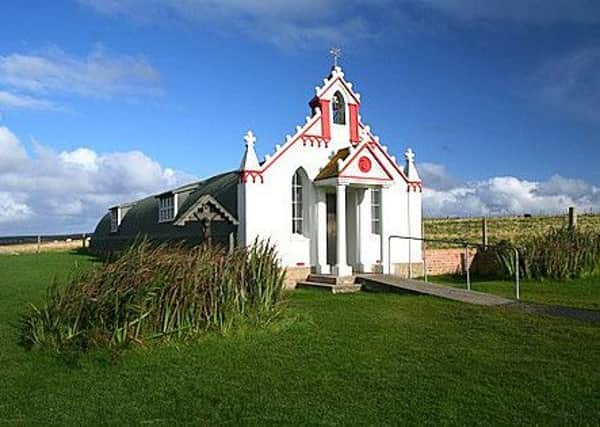Scottish fact of the week: Italian Chapel, Orkney


Although little remains of the prisoner-of-war camp buildings, the chapel remains, having been completed after the war ended and restored twice, once in the 1960s and again in the 1990s.
Over 500 Italian prisoners of war were brought to Orkney in 1942, having been captured in North Africa, to construct the four causeways known as the Churchill Barriers.
Advertisement
Hide AdAround 200 were based at Camp 60, which was on Lamb Holm. The commandant of Camp 60, Major T P Buckland, and Father Giacobazzi, the Camp’s priest, agreed in 1943 that a place of worship was needed.
The Italian Chapel was built using limited materials - two Nissen huts were placed end-to-end, before being covered with plasterboard. The alter was constructed from leftover concrete.
Domenico Chiocchetti, a PoW from Moena, painted the sanctuary end of the chapel, whilst other prisoners decorated the rest of the chapel’s interior. A facade was created to conceal the shape of the Nissen huts, and to make the building look more like a church.
Chiocchetti remained on Lamb Holm to complete the chapel, despite his fellow prisoners being released shortly before the end of the war in 1945.
In 1960, and again in 1964, he returned to the island to help with the the chapel’s restoration project, but was too ill to travel in 1992 with his fellow PoWs for a commemorative trip to mark the 50th anniversary of their arrival on the island.
Chiocchetti died in 199, three years after officials from Orkney and Moena signed a declaration reinforcing the ties between the two locations.
Advertisement
Hide AdStill used as a chapel today, over 100,000 visitors make the trip to Lamb Holm each year, and has become one of the UK’s best-known symbols of reconciliation.
READ MORE